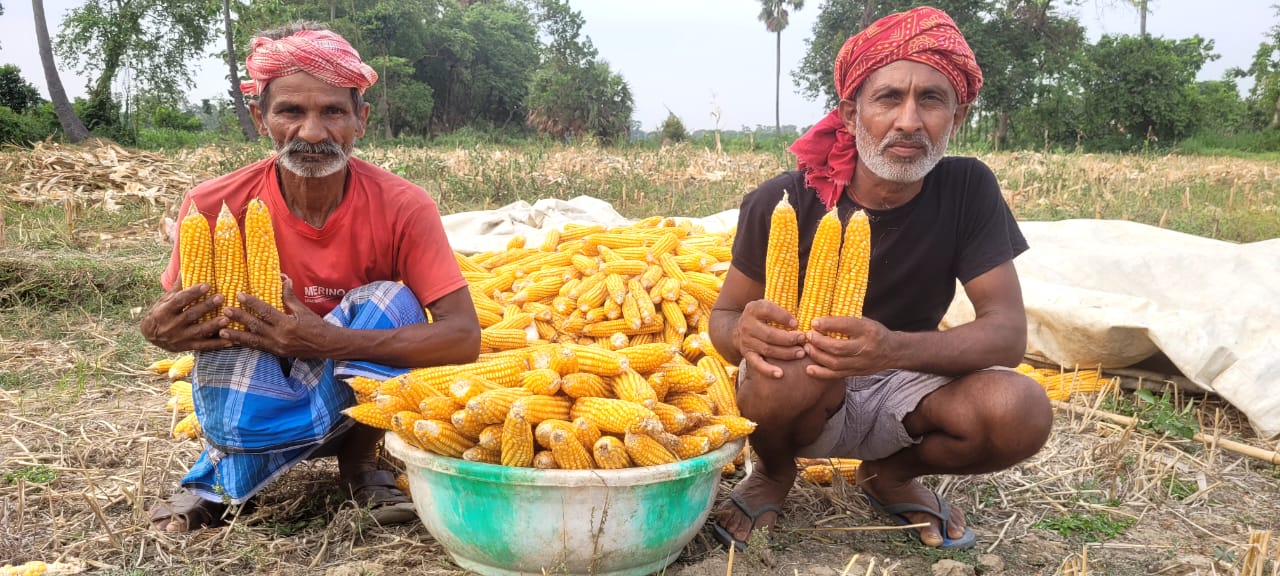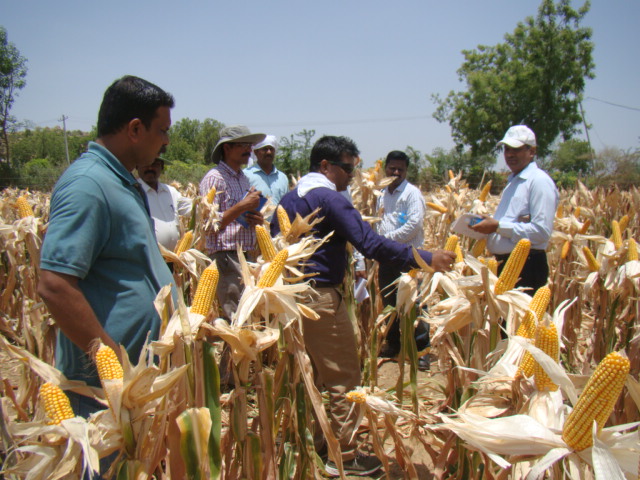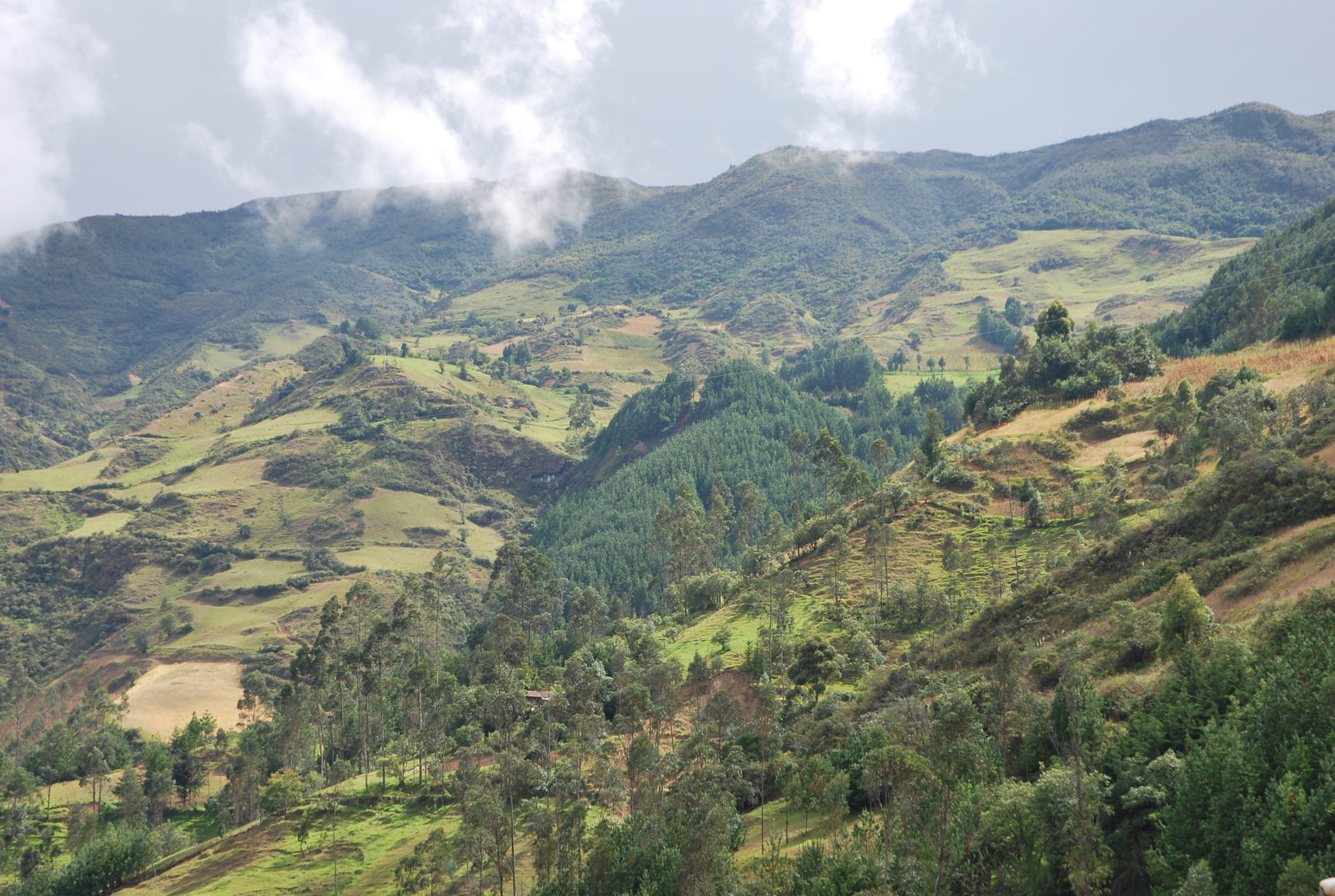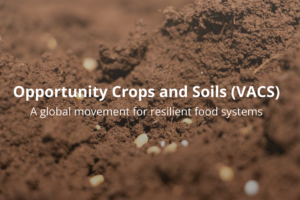
India ranks first in rainfed agriculture globally, with rainfed areas producing close to 40% of food grains, supporting two-thirds of the livestock population, and playing a pivotal role in ensuring food security and sustenance. Although the vast rainfed area offers tremendous opportunities, fully tapping into its potential is hindered by persistent challenges, including an ever-changing climate and associated weather extremes, particularly during the summer rainy season. Rainfed farming systems are prone to the vagaries of monsoon rains and are highly vulnerable to various abiotic stresses, including drought, coupled with heat and/or waterlogging at different stages of crop growth within the same season.
Climate change-induced variability with high uncertainty and increased frequency of weather extremes adds further challenges to farm productivity and, ultimately, to the subsistence of millions of smallholder maize farmers in the Asian tropics. Within South Asia, India has been identified as one of the hotspots for climate change risks, posing a serious challenge to the productivity of rainfed crops, including maize.
In India, maize is primarily grown as a rainfed crop during the summer rainy season (Kharif), which accounts for approximately 70% of the total maize area in the country. In recent years, Indian maize has shown impressive growth; however, much of this is attributed to high-input, favorable environments (winter and spring season maize). Stress-prone rainfed production systems are often considered unprofitable and, therefore, receive the least priority from multinational seed companies (MNCs). Smallholder farmers in rainfed ecologies thus continue to grow either low-yielding open-pollinated varieties (OPVs) or take the risk of using regular high-yielding but stress-vulnerable hybrids, with little assurance of a return on investment under rainfed conditions. Consequently, the rainfed maize system remains a low-yielding and risky option for smallholders.
While high yields are a priority for both women and men farmers, yield stability and resilience are equally crucial in climate-vulnerable agroecologies, as they help minimize downside risks due to intermittent exposure to weather extremes during the cropping season. Therefore, there is a need to deploy and scale out elite, high-yielding, climate-adaptive maize (HyCAM) hybrids in stress-vulnerable rainfed agroecologies to significantly improve farm productivity and, thereby, enhance the livelihoods of millions of smallholder farm families.
Over the years, concerted efforts by CIMMYT, in collaboration with public sector institutes in India, including the ICAR-Indian Institute of Maize Research (IIMR) and state agricultural universities (SAUs), have resulted in the development of several HyCAM hybrids officially released for cultivation. However, many of them have not effectively reached the hands of the smallholder farmers who grow maize in rainfed marginal ecologies.
The project Climate-Adaptive Maize for Stress-Vulnerable Agroecologies (CAMSA) was conceptualized to facilitate the targeted positioning and scaling of these HyCAM hybrid seeds, supported by the Department of Agriculture & Farmers Welfare (DA&FW), Ministry of Agriculture, Government of India. With the overarching goal of enhancing the productivity of rainfed Kharif maize, and a focus on system resilience and sustainable agriculture, the project is operating in eight selected clusters of districts (CoDs) with average productivity of ≤2.5 tons/ha, covering stress-prone agroecologies across eight states, including Jammu & Kashmir, Karnataka, Madhya Pradesh, Maharashtra, Gujarat, Rajasthan, Odisha, and Uttar Pradesh. The project is designed with a focus on the 3As: Awareness, Availability, and Access to quality seeds of HyCAM hybrids at a reasonable price, along with associated low-cost agronomic practices suitable for rainfed ecologies, said P.H. Zaidi, the project leader of CAMSA.

Group Photo: CAMSA ‘Training for Trainers’ Program on Profitable maize production under rainfed conditions and hybrid seed production & Annual progress review meeting (Photo: CIMMYT)
To develop a task force for this mission, a two-day Training of Trainers (ToT) workshop, titled Profitable Maize Production under Rainfed Conditions and Hybrid Seed Production, was organized on May 8–9, 2025, at CIMMYT, Hyderabad, India. The workshop was attended by collaborating center leads and their team members, who learned various skills related to maize production under rainfed, stress-vulnerable conditions. The workshop also focused on co-reflection and knowledge sharing. State team leads shared progress updates under CAMSA over the past year, showcasing their on-the-ground activities through on-farm demonstrations, farmer trainings, and hybrid seed production.
The sessions provided an excellent platform for exchanging insights, with participants discussing challenges and brainstorming innovative strategies to reach marginal, least-served areas with HyCAM hybrid seed, which could prove a game-changer for these stress-vulnerable agroecologies. The squad of well-trained personnel has returned to their respective states and is now organizing a series of ‘Whole Family Trainings‘ sessions in their targeted clusters of districts.


 Climate adaptation and mitigation
Climate adaptation and mitigation 

